Most people believe plants don’t grow, reproduce, and survive without soil or potting mix. It may surprise you, but there’s a plant species that thrive in the air and doesn’t need soil as the growth medium. Sounds impressive, no? This species is named Air Plants, and they grow in the presence of air, light, and water without making any direct contact with soil. However, the question that arises in everybody’s mind who hears about such unique plants for the first time is, “How Do Air Plants Grow Without Soil?”

If you are also eager to learn about the unique properties of air plants and how they flourish without soil, we are here to help. This article will unveil information like what air plants are and how they are unique. So, let’s dig further!
1. What are Air Plants?
Air Plants, also known as Tillandsia, are the native plants typically present in the Southern United States, Mexico, California, and Central America. These plants love to stay in warm temperatures and have over 650 species. They have an exotic appearance and alien-like leaves that immediately make you fall in love with them. Although air plants are low-maintenance, they still need proper care and attention to have a happy life. Also, don’t forget to give these plants a handful of light, especially if you place them indoors.
2. How Do Air Plants Grow Without Soil?
Air plants belong to the family of epiphytes, which means they attach themselves to other plants for support. However, they are not parasitic and don’t cause any harm to the other plants. In a typical rainforest, they are found on the tree trunks, which protects them from the bright sun, but provides them with sufficient filtered sunlight.
The exciting thing is that the air plant’s roots are not for absorbing nutrients, but they are only for providing an anchor. So how do the air plants get nutrients for survival? Well, these plants have tiny scales on their leaves known as trichomes, which help in nutrient and water absorption. You can anchor the air plants onto any surface for decoration or a hanging planter by cutting the excess roots.
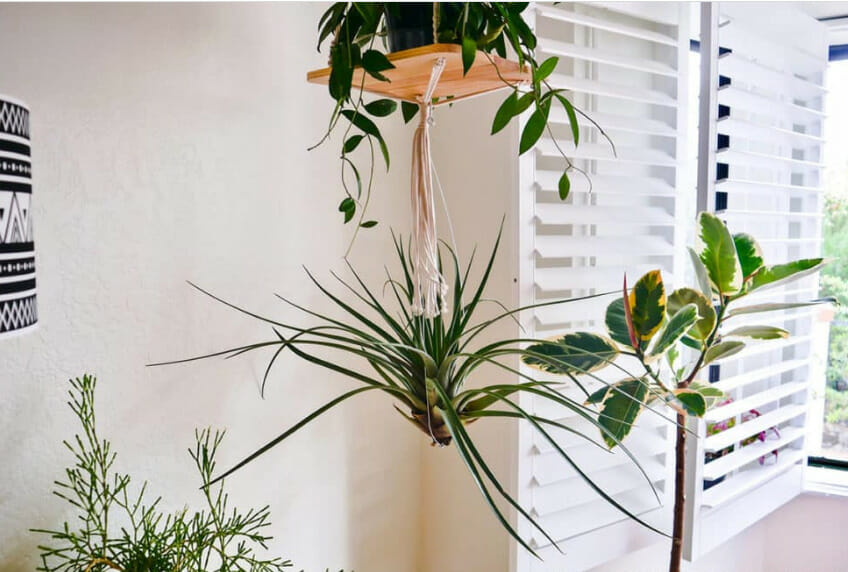
Also Read: All About Air Plant Roots (And Why They Don’t Need Soil)
3. Air Plants Care:
Although these are hardy plants and can grow without soil, they do require a certain level of care as water and sunlight are essential for their survival and growth. Consider the following things while caring for air plants:
3.1. Provide Adequate Water to Air Plants
Air plants don’t grow in the soil doesn’t mean they don’t need other essential elements and nutrients. They love water and moisture and need it for proper reproduction and growth. There are tiny pores present on their leaves that drain nutrients from the water. However, too much water may die your beautiful leafy air friend, so it is suggested to follow the below-mentioned points and don’t play with the life rules of air plants:
- Submerge your favorite air plants in water once a week and let them sit in it for hours. This helps them in extracting maximum moisture and nutrients. Also, check out the general characteristics of your species before placing them in water, as some air plants need to sit in water every two weeks.
- Use bottled or rainwater for air plants. It’s because the soft water and tap water have salts and minerals that may burn the air plants preventing them from nutrient extraction.
- Once the plants have soaked enough water, please remove them and shake off excess water. Please place them in some bright spots for proper and quick drying.
- Keep the water temperature between the 50s to 90s and use water-soluble fertilizers to help them get maximum nutrition.
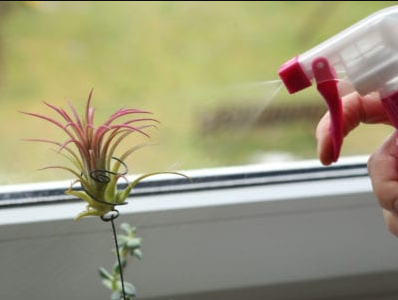
3.2. Take Care of the Light Conditions
Check their light requirements to ensure that your beautiful air plants grow safely. Air plants prefer indirect and a little cool light. It’s because they are prone to get “fried,” and direct sunlight harms their leaves. But they flourish quickly in shady areas like tree canopies.
The light requirements of air plants also depend upon the humidity level in the environment. If the humidity is high, the air plants can handle a little bit more sunlight as they won’t dry out quickly.

3.3. Maintain the Right Temperature
Air plants love warm temperatures, which means anything above 45°C suits these plants the most. However, the air plants will die if the temperature drops below 40°C. The fact that these plants grow in warm weather makes them a perfect outdoor plant for people residing in Zone 9 or something much warmer.
4. Things To Consider While Buying Air Plants?
If you have learned how air plants grow without soil, you must be looking for a suitable air plant species to grow. Here’s what to look for while buying new air plants:
- Flexible and unbroken leaves and stems.
- No brown or black tips on the leaves.
- No bugs or insects are present on the plant as they can nibble the leaves.
4.1.Things You Need to Grow Air Plants
You don’t need specific tools or containers to grow air plants. It’s because air plants aren’t soil dependent for growth. However, it would be best if you still had a few essential tools and instruments to take care of your favorite air plants. Here are a few of them:
- A spray bottle or a bowl to fulfill the water needs of your air plants.
- Buy a special Bromeliad fertilizer to give to your air plants a few times a year.
- Sharp scissors to cut the dead or ruptured plant leaves or to give them a neat look.
- A mounter or hanger to set the plants.
5. Best Air Plants For Beginners
Air Plants are hardy and low-maintenance, but some species are relatively easier to care for if you are a beginner.
- Tillandsia Aeranthos
With its stiff green upward leaves, this flowering air plant is the most common option for beginners. It is very low-maintenance and resilient hence requiring very minimal watering. The purple flower is a beauty that appears every spring.
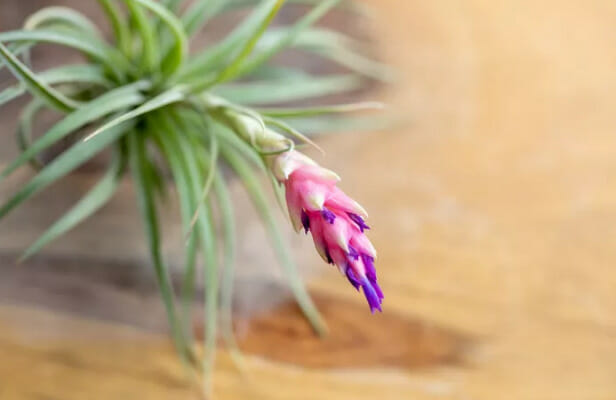
- Tillandsia tectorum Ecuador
Generally, air plants need to be submerged in water for an extended period. But these tillandsias do not need to be wet for more extended periods. They can go for 2-3 weeks only with light misting. The leaves of this beautiful tillandsia tectorum have a tentacles-like appearance. During the blooming season, they have pale lavender flowers.
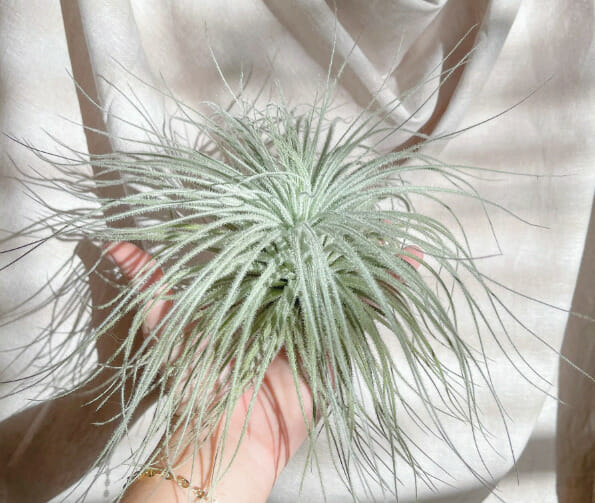
- Tillandsia ionantha
For beginners, tillandsia ionantha is the favorite air plant. They are loved due to their vivid colors and beautiful fuzzy leaves. They love bright indirect light and good misting. There is no need to deep water them, and a 10-minute dunk in water is sufficient for 1-2 weeks in summers. Whereas, in winters, only misting can do the work. If you have a busy schedule, this plant is for you as it doesn’t require much care.
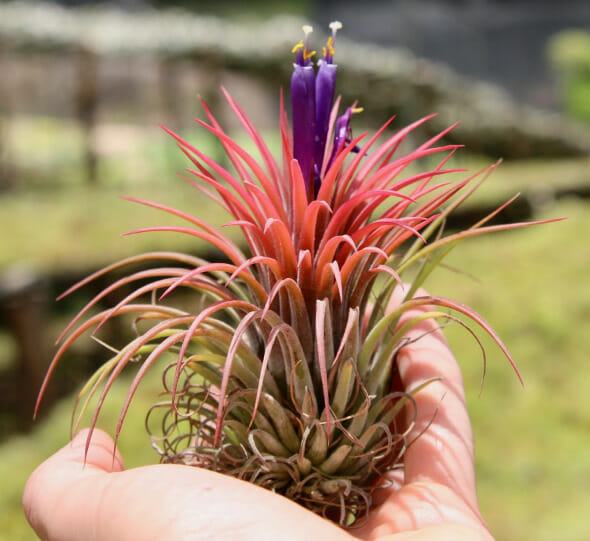
- Tillandsia caput-medusae
This bulbous air plant is easy to care for. The green curly leaves resemble the snake, and it is also known as the octopus plant. This plant is perfect for decoration as it can grow horizontally and upside down. With a good amount of light, it can tolerate less watering.

6. Final Thoughts
Air plants are tough and don’t require much maintenance. That’s the reason newbies select them to practice their gardening habits. The most exciting part is that these plants don’t need soil and rely on water to draw essential nutrients. We hope this article provides a detailed insight into how do air plants grow without soil.
If you liked this article, follow our website for more articles on plants and planters.
